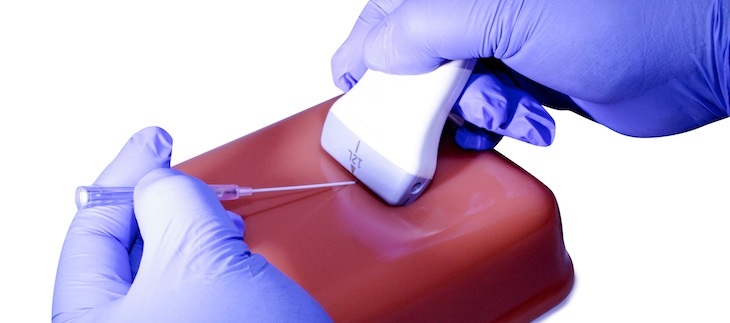UA researchers form new medical testing venture, receive help from Fort Smith company
by April 16, 2018 5:20 pm 1,117 views

Image of a Humimic testing platform.
Research from the University of Arkansas at Fayetteville combined with medical products made by a Fort Smith-based company resulted in new products touted as a better way to train clinicians and test medical imaging equipment.
Morten Jensen, UA associate professor of biomedical engineering, Jamie Hestekin, UA professor of chemical engineering, and Megan Laughlin, a UA doctoral student in biomedical engineering worked with several partners to form Vivas, a company to license technology used to train clinicians and test medical imaging equipment.
According to information provided by the University of Arkansas, Vivas partnered with Fort Smith-based Humimic Medical on the new products. Humimic already manufactures medical gels and other items for training and equipment testing. Products made by Humimic are clear or opaque synthetic gelatin that simulate human tissue.
The UA professors and student used Humimic’s medical gels “to create a unique model with small interior channels that simulate human blood vessels. The researchers can pump fluid through these models to simulate blood flow,” noted the UA statement. The UA professor and students first reached out to Humimic in search of realistic models.
“Their technology addresses many clinical training problems – repeated needle sticks on patients by physicians and nurses, for example. Providing models for these practices ensures that equipment works properly and helps build confidence before performing procedures on humans. The medical staff can practice inserting syringe needles into the artificial blood vessels, and the correct positioning of a syringe needle in the blood vessel can be confirmed by the presence of blood-mimicking fluid that enters the syringe from the artificial vessel during the procedure.”
The UA researchers and Humimic said the gel models are similar to human tissue consistency and firmness and can be produced in a variety of skin colors. When blood-like fluid is used, ultrasound equipment detects the fluid just as it would in a human body.
“We use models of the human fluid flow system extensively in our cardiovascular biomechanics research laboratory,” Jensen said. “This project was a natural bi-product of those efforts.”
The collaboration with Humimic Medical began when Laughlin and another doctoral student needed realistic models that mimicked human blood vessels. Laughlin at the time was working on a doctoral project on congenital conditions related to blood through the aortic valve.
The researchers filed an invention disclosure in November 2017, and in January, the University of Arkansas Board of Trustees approved a license agreement for the new technology. Vivas and Humimic Medical started shipping the first products at the end of February. Jensen said the companies have received approval from national government health systems in Europe. The group also is considering plans to place artificial organs into the gels in order to simulate diseases and how to test procedures and medical equipment on various organ diseases and disease stages.
“What we’re really trying to do is develop a product and jobs that will help benefit the state of Arkansas,” Hestekin told Talk Business & Politics. “We’re all with the university that did this, and do I think this could make me some money? Yes. But moreover we’re trying to show that we can disseminate innovation that can create jobs.”
Hestekin told Talk Business & Politics the portion of the industry in which they are operating is a “tricky market” on which to place a value.
“The market is potentially big. … But how much of that can we capture? … We’re hoping in hundreds of thousands a year,” Hestekin said of early efforts for a company in business about six months.
Hestekin also said Humimic will help the business grow, especially with product distribution.
“They actually understand that (distribution) in the medical market really well, and we provide the innovative architecture that works with their gels,” he said.
Biomedical testing – including diagnostic and medical laboratories – is a $53 billion a year industry, according to research firm IBISWorld. The industry employs an estimated 292,489 people among 36,672 businesses. The industry is expected to grow through 2022 at an annual rate of of 2.8%.
The UA Office of Industry Engagement worked to connect the university with Startup Junkie, a Fayetteville consulting firm focused on innovation and entrepreneurship, which provided guidance on company development and strategy.
Funding for the research leading to these technologies was made possible in part by the Arkansas Research Alliance. Jensen is an Arkansas Research Alliance Scholar, and Hestekin holds the Jim L. Turpin Endowed Professorship in Chemical and Biochemical Separations.
“The Arkansas Research Alliance is happy to play a role in seeing this research become a breakthrough in medicine,” said Jerry Adams, president and CEO. “The commercialization of ideas like this are great for Arkansas.”
